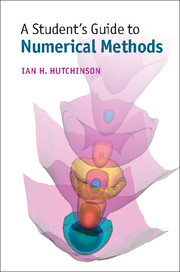
-
Select format
-
- Publisher:
- Cambridge University Press
- Publication date:
- 05 May 2015
- 30 April 2015
- ISBN:
- 9781316155516
- 9781107095670
- 9781107479500
- Dimensions:
- (228 x 152 mm)
- Weight & Pages:
- 0.48kg, 221 Pages
- Dimensions:
- (228 x 152 mm)
- Weight & Pages:
- 0.36kg, 216 Pages
Book description
This concise, plain-language guide for senior undergraduates and graduate students aims to develop intuition, practical skills and an understanding of the framework of numerical methods for the physical sciences and engineering. It provides accessible self-contained explanations of mathematical principles, avoiding intimidating formal proofs. Worked examples and targeted exercises enable the student to master the realities of using numerical techniques for common needs such as solution of ordinary and partial differential equations, fitting experimental data, and simulation using particle and Monte Carlo methods. Topics are carefully selected and structured to build understanding, and illustrate key principles such as: accuracy, stability, order of convergence, iterative refinement, and computational effort estimation. Enrichment sections and in-depth footnotes form a springboard to more advanced material and provide additional background. Whether used for self-study, or as the basis of an accelerated introductory class, this compact textbook provides a thorough grounding in computational physics and engineering.
Contents
Metrics
Full text views
Full text views help Loading metrics...
Loading metrics...
* Views captured on Cambridge Core between #date#. This data will be updated every 24 hours.
Usage data cannot currently be displayed.
Accessibility standard: Unknown
Why this information is here
This section outlines the accessibility features of this content - including support for screen readers, full keyboard navigation and high-contrast display options. This may not be relevant for you.
Accessibility Information
Accessibility compliance for the PDF of this book is currently unknown and may be updated in the future.


